The Dystopian Journey of AI Headshots
I decided to get AI headshots on a whim. I ended up sending my BDD on a rollercoaster ride to hell–and back.

I decided to get AI headshots for two reasons: 1) I needed headshots, and 2) I am human and thus prone to vanity and curiosity. I’m clearly not alone in that. At any given time, there is a new filter trending on TikTok tailor-made to cater to the vain and the curious: What would I look like with bangs? What would I look like as a Na’vi princess from Avatar? Can I pull off Pamela Anderson eyebrows? While trying these filters can come from a comparatively practical place, like experimenting with a new hair color before doing anything permanent, let’s be honest: we mostly just want to see if there are any undiscovered little tweaks that would suddenly make us super hot.
Take the current trending filter, which ostensibly shows you what you would look like in the ‘70s. As far as I can tell, this filter operates by taking your face, Yassifying it, then putting it on the body of a super hot person dressed somewhat ‘70s. It doesn’t use your own hair, your own body, and barely your own face. Yet, TikTok is awash with posts of this filter, with captions like, “Wow, my boyfriend would have been SO SEXY in the ‘70s!” or, my personal favorite, coy little humble brags like, “I never thought ‘70s style would suit me, but I guess it does!” To which I say: Of course it does, Kayleigh. We all know it does. No one is trying this–let alone posting it–thinking they’re going to look bad. With AI, our relationship with our appearance has gained a whole new level of consideration: not just how we do look, but how we could look.
I’m going to be straight with y’all: I have struggled with Body Dysmorphic Disorder, or BDD, on and off for much of my life. It’s not that I personally care that much about my appearance; it’s that society does. Being raised with a classic Boomer almond mom, there’s a fundamental fear that my appearance is my main value to society, and that to have any level of success and safety in the world, I need to look a certain way. I say “certain” because this “way” is never clearly defined: one decade, all our asses are too fat, and the next, they’re not thicc enough. One year, big eyebrows are in, the next year, thin ones are. You’ll never know for sure if your looks are passing muster, so you must be hyper-vigilant. You must go over your physical appearance with a fine-toothed comb, a process which ultimately becomes akin to getting too high in your dorm room and not being able to decide if your feet are funny-looking hands or your hands are messed-up looking feet. It's the visual equivalent of semantic satiation, aka repeating a word until it eventually loses all meaning. In other words, if you look at anything long enough and critically enough, it starts to look weird as heck–and that’s when the BDD flares up.
To be honest, I don’t know if I’ll ever really be clear on what I look like to others. Having my formative years be rife with movies like Shallow Hal, The Hottie and the Nottie, and She’s All That–where we’re supposed to believe that glasses and a ponytail make Rachel Leigh Cook a hideous monster–it’s hard to un-internalize the idea that looks are the ultimate barometer of whether you’ll be loved and accepted. However, it’s a losing game to even go down that road, so to be honest, my coping mechanism is mostly to just not think about it. I don’t post myself that much, and when I do, I just trust what pictures other people say look good and roll with that. I personally don’t feel the need to mess with my mind by putting my face through filters that will show me all the ways I could look better. I’m not judging people who do; I just have horrible self-esteem, and this is what works for me!
However, I wanted a headshot and I wanted to save money, so to Google I went. Was I expecting that using AI might reap some of those benefits of the zhuzh-ing that Instagram and TikTok promise? In hindsight, yes. Did I get it? No, no, I did not. Did I instead get a one-way ticket to the deepest, darkest uncanny valley and a mano-a-mano cage fight with my BDD? Yes–yes, I did.
In the spirit of journalistic integrity, I will here include some pictures of my face so y’all know what we’re working with. The photos below are from the same day of my civil wedding ceremony, where I wore minimal makeup because I am bad at planning. These are also some of the photos I gave the software:
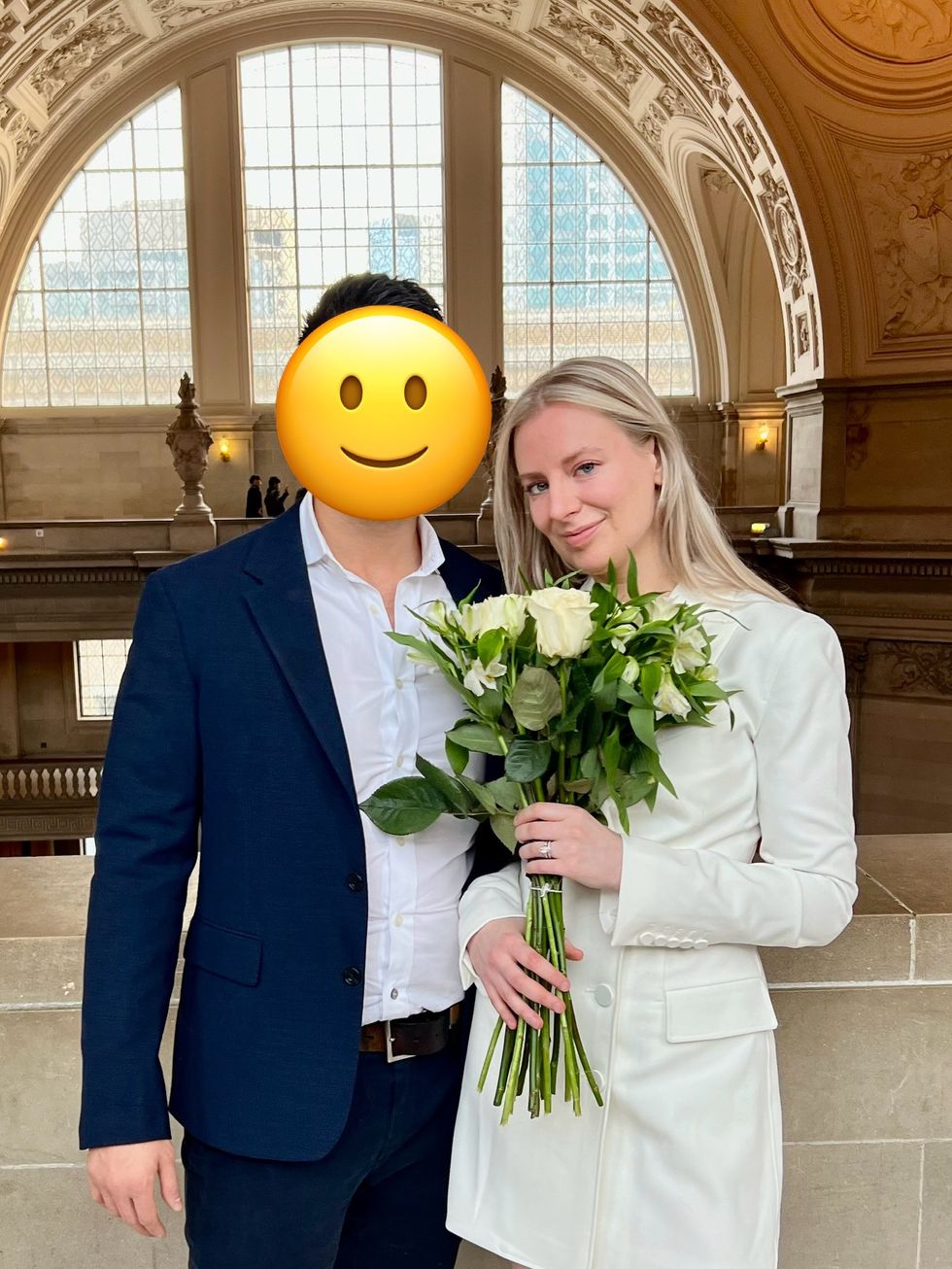

I used the site Fotor, which advertised itself as free but ended up charging me to access the delightful works below. I already would not recommend them based on that, but y’all–get ready for this ride. After the program took about 10-20 minutes to work up these masterpieces, I got a full gallery of what this cutting-edge technology thinks I look like.
Let’s start from the beginning. My emotional journey started with a distinct sense of disappointment that the AI thought the best way to portray my face was simply by using someone else’s. Here’s the first few photos:


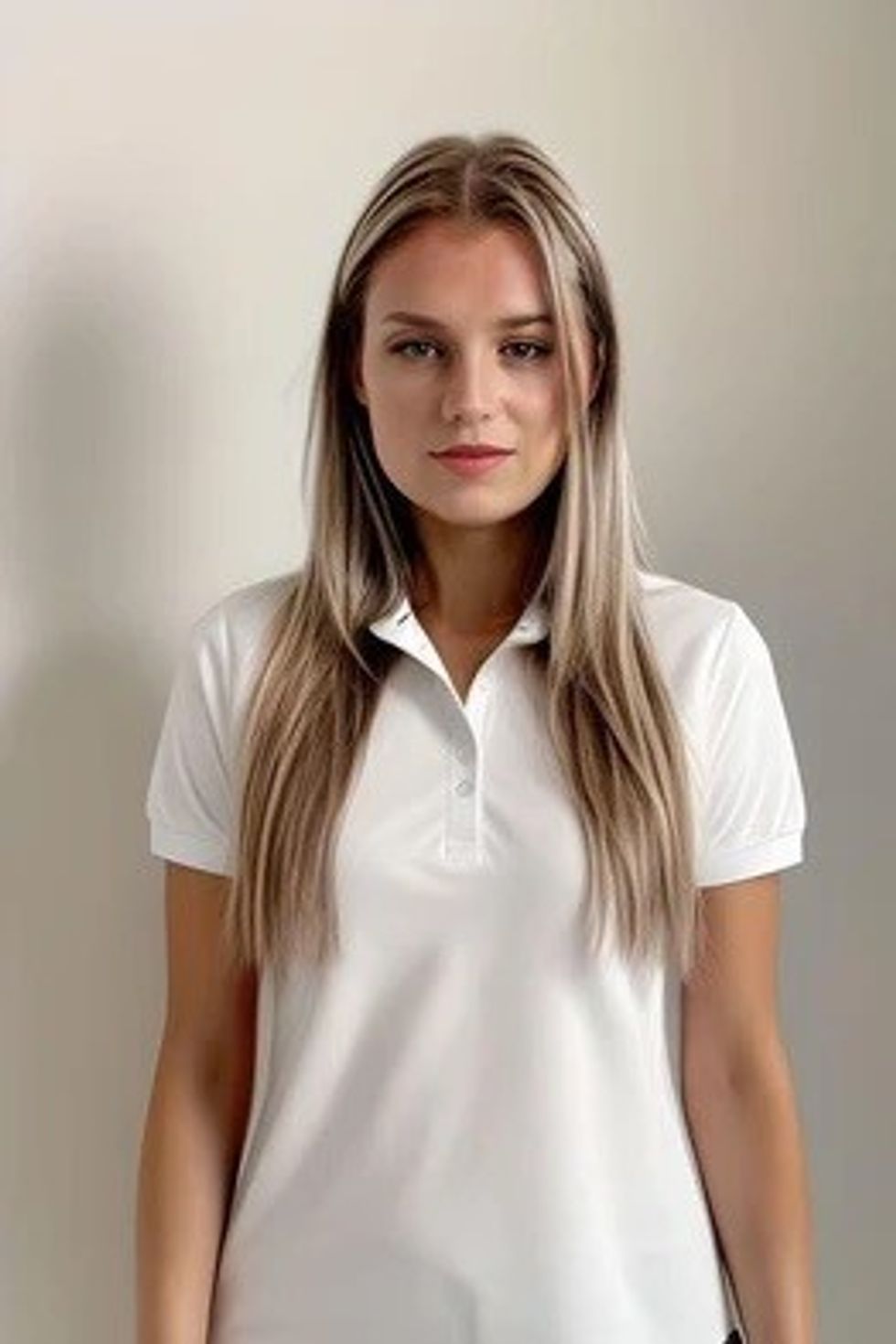
Do you know her? Me neither! She looks like a very nice masseuse at a mid-level country club. But, she doesn’t look like me. I kept scrolling and was unhappy to find that the more the pictures looked like me, the more messed up and objectively unattractive these gals were getting. Even putting aside the fact that the software kept feeling the need to bump me up a few cup sizes, it was hard not to take it personally that every picture that had some vestige of my actual face was of someone markedly less attractive. Take these gals:
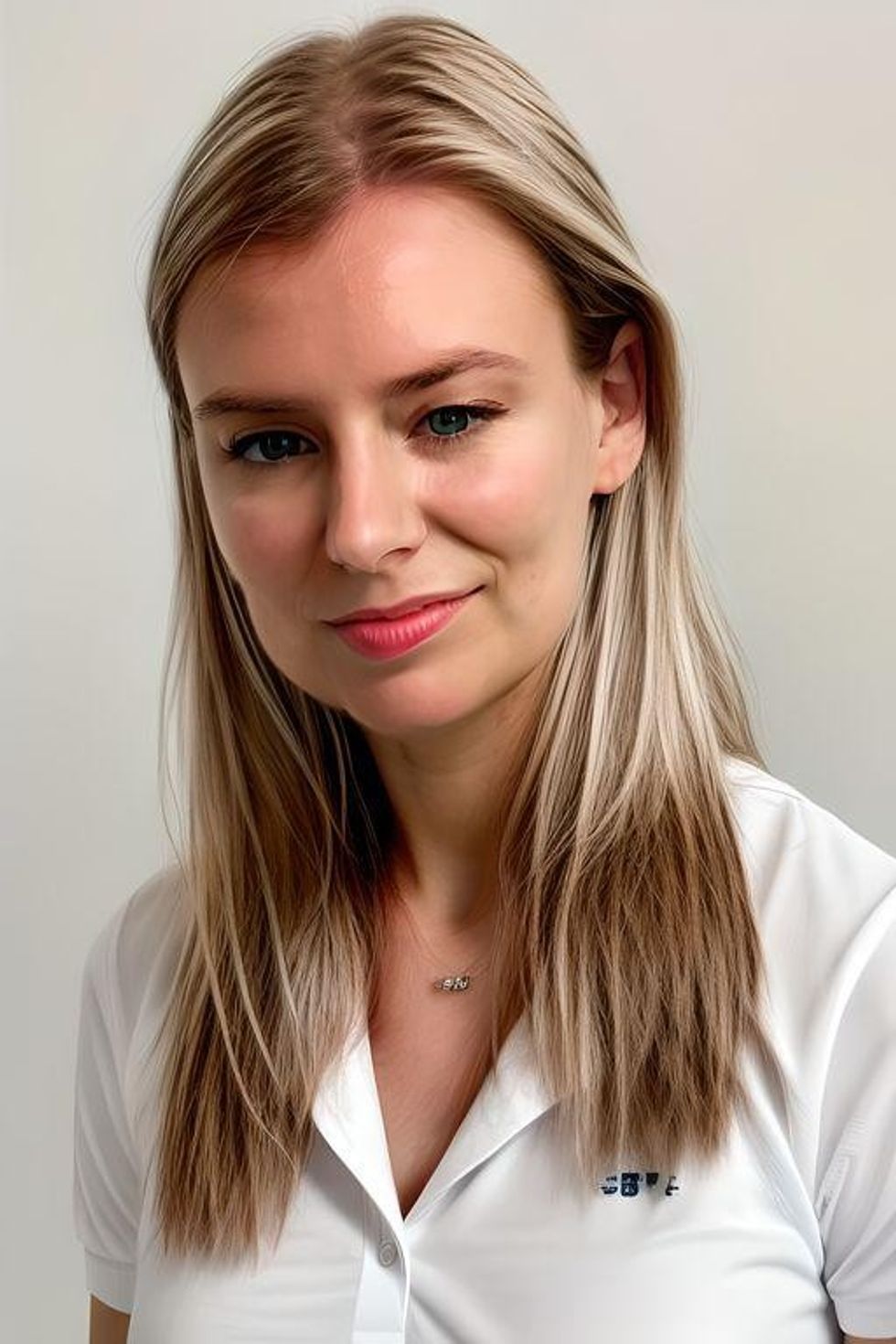
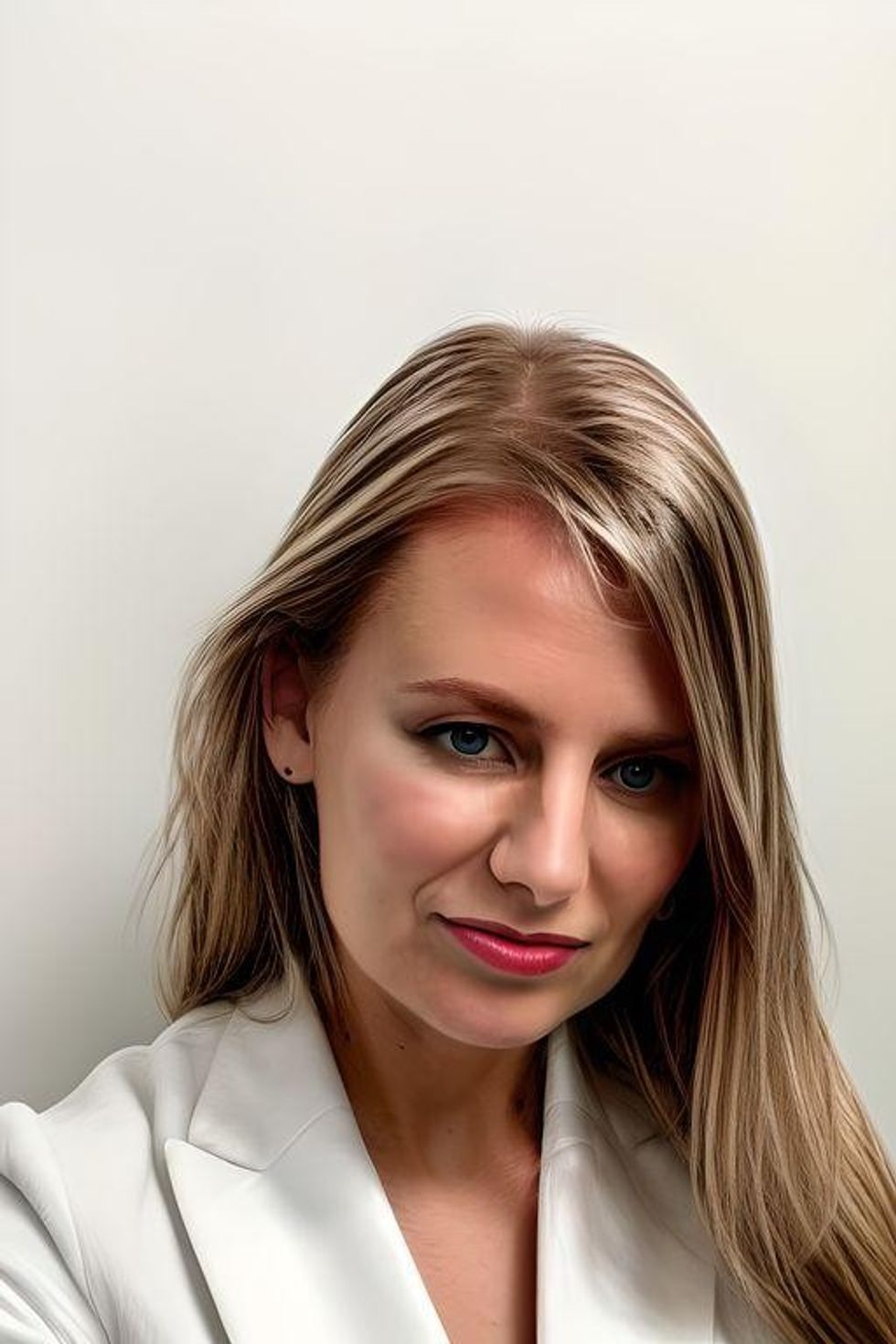

Sure, they’re doing a little better with getting my actual features. These ladies are closer to having my real eyes, lips, cheeks, nose, and jawline. But, the computer has decided that not only are little additions like being cross-eyed an accurate look, but that my personal face shape is best approximated with odd cheek divots and sagging jowls
As I continued to scroll, it became clear that the computer had gone through distinct phases in trying to make me look like my inputted goal of “generally good but professional.” First, it decided I looked better as a teenager:

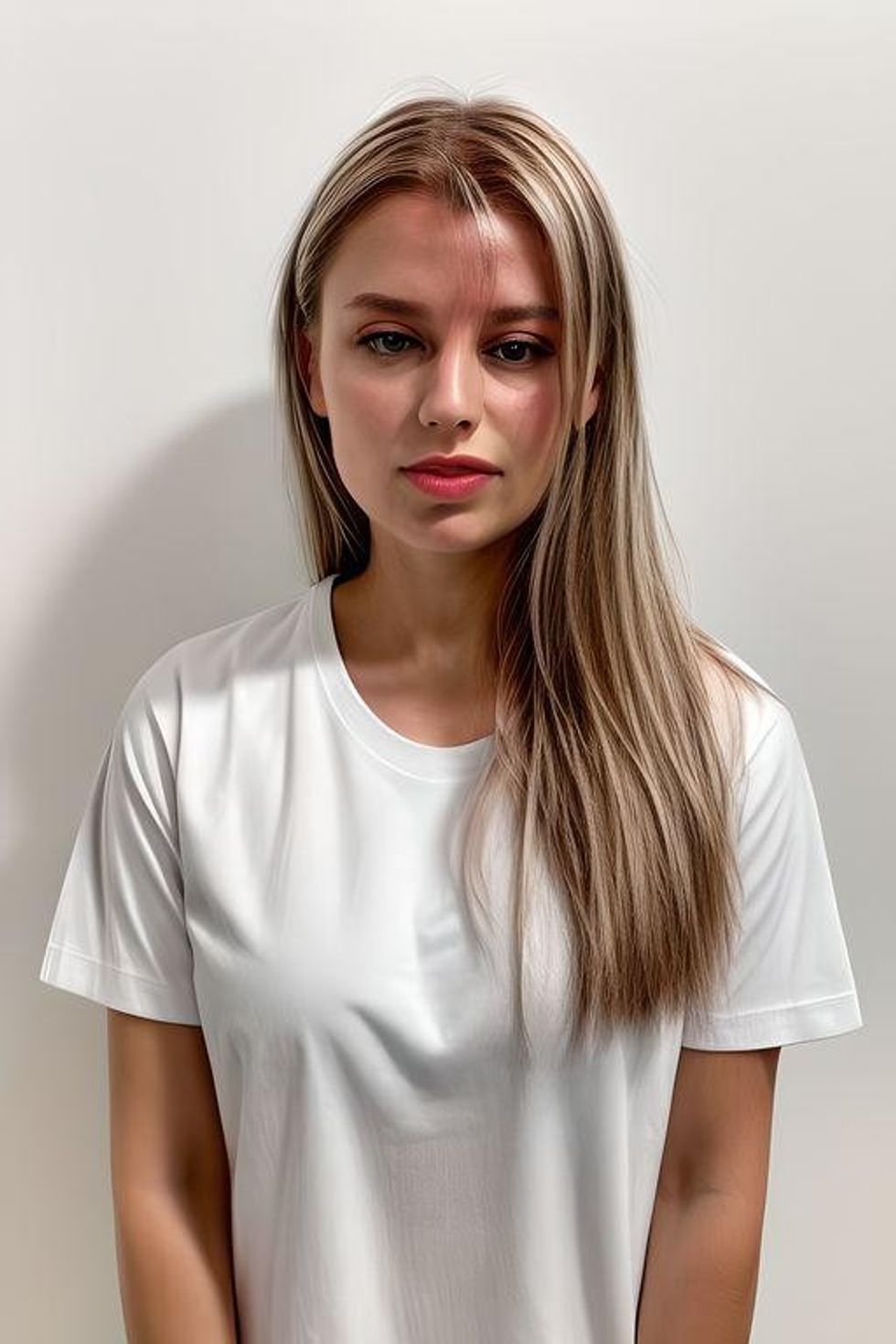

It then went through a phase of working through its belief that I have a massive cone head:
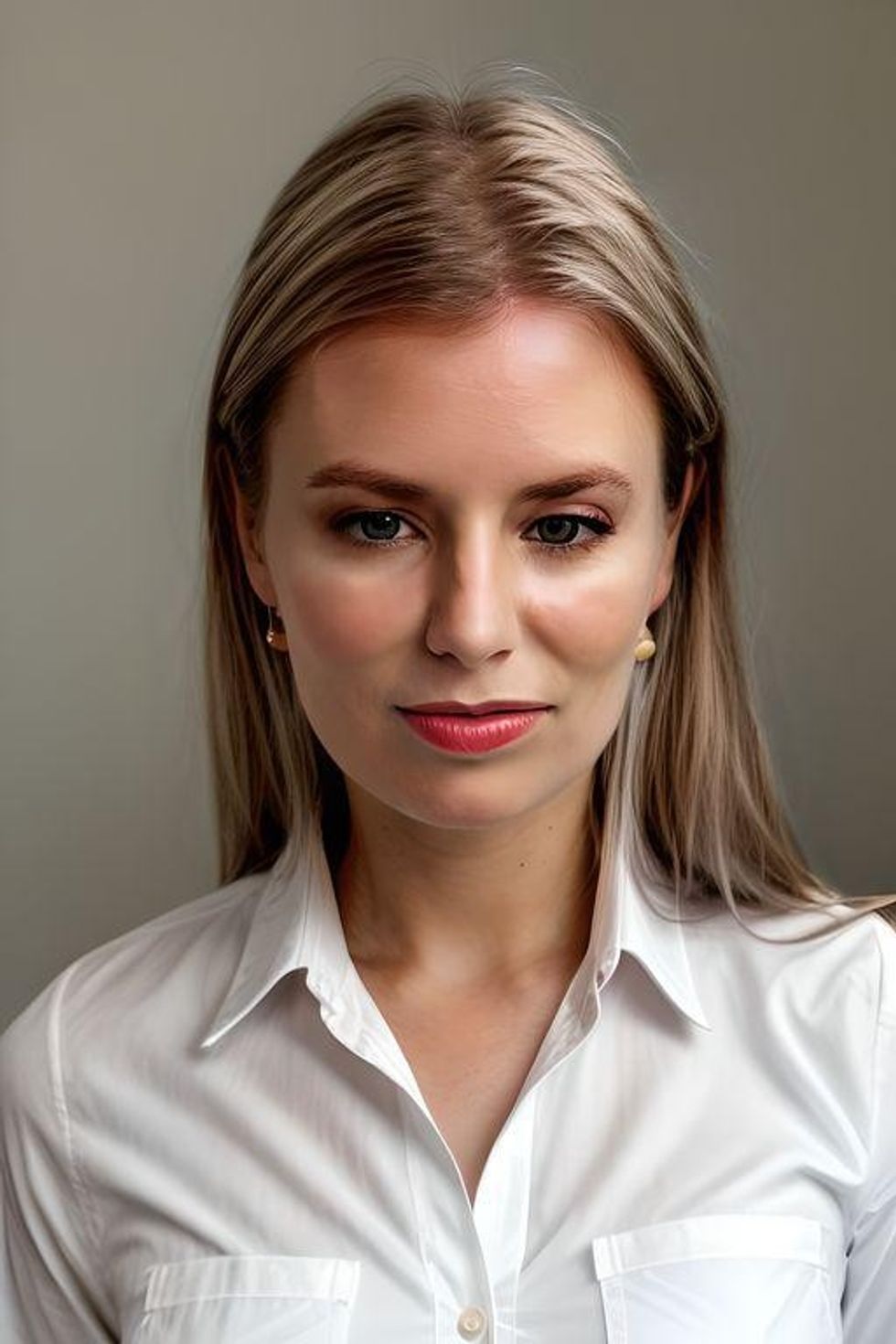
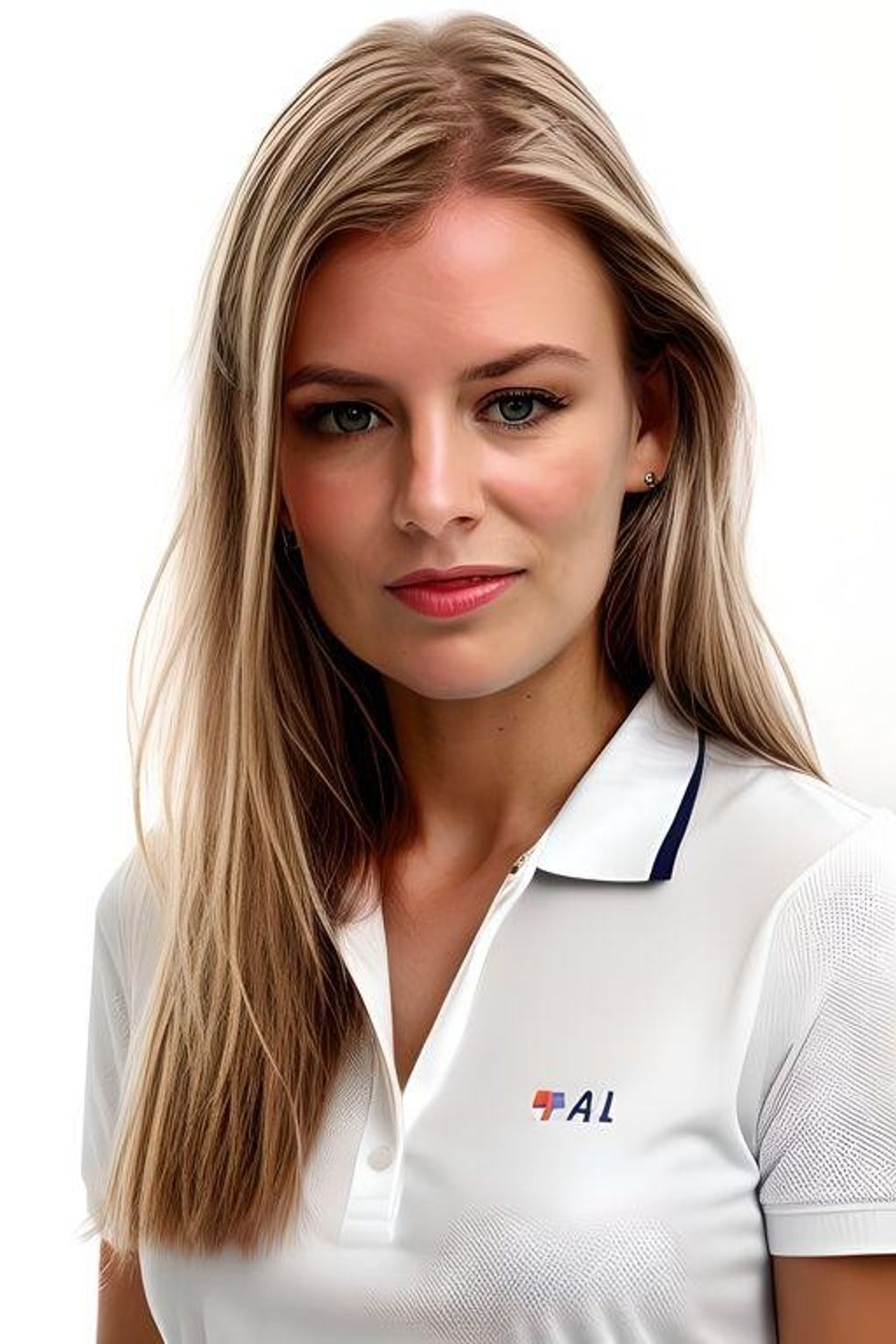

It next tried to convince me that I needed big ole bangs to hide said cone head:
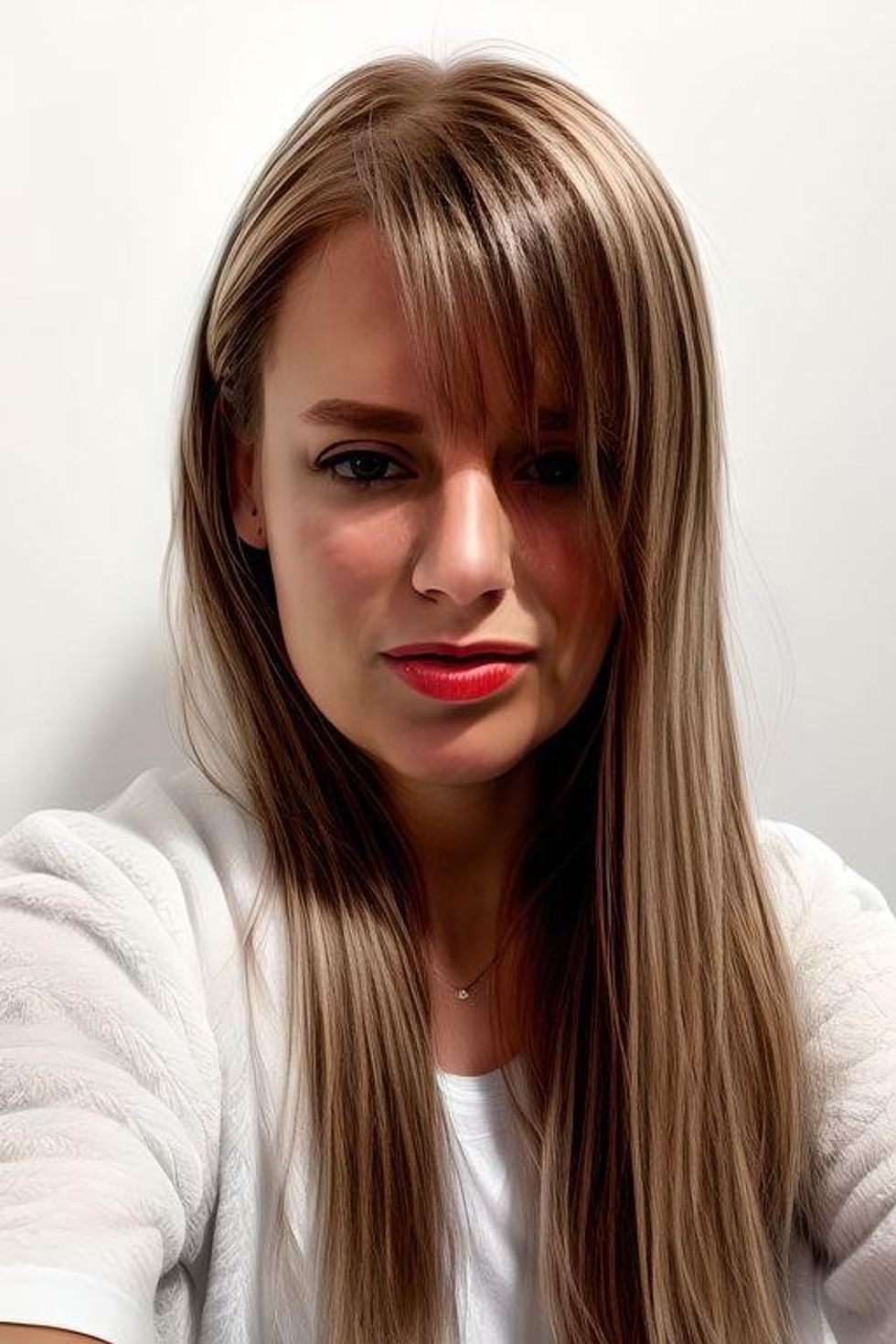
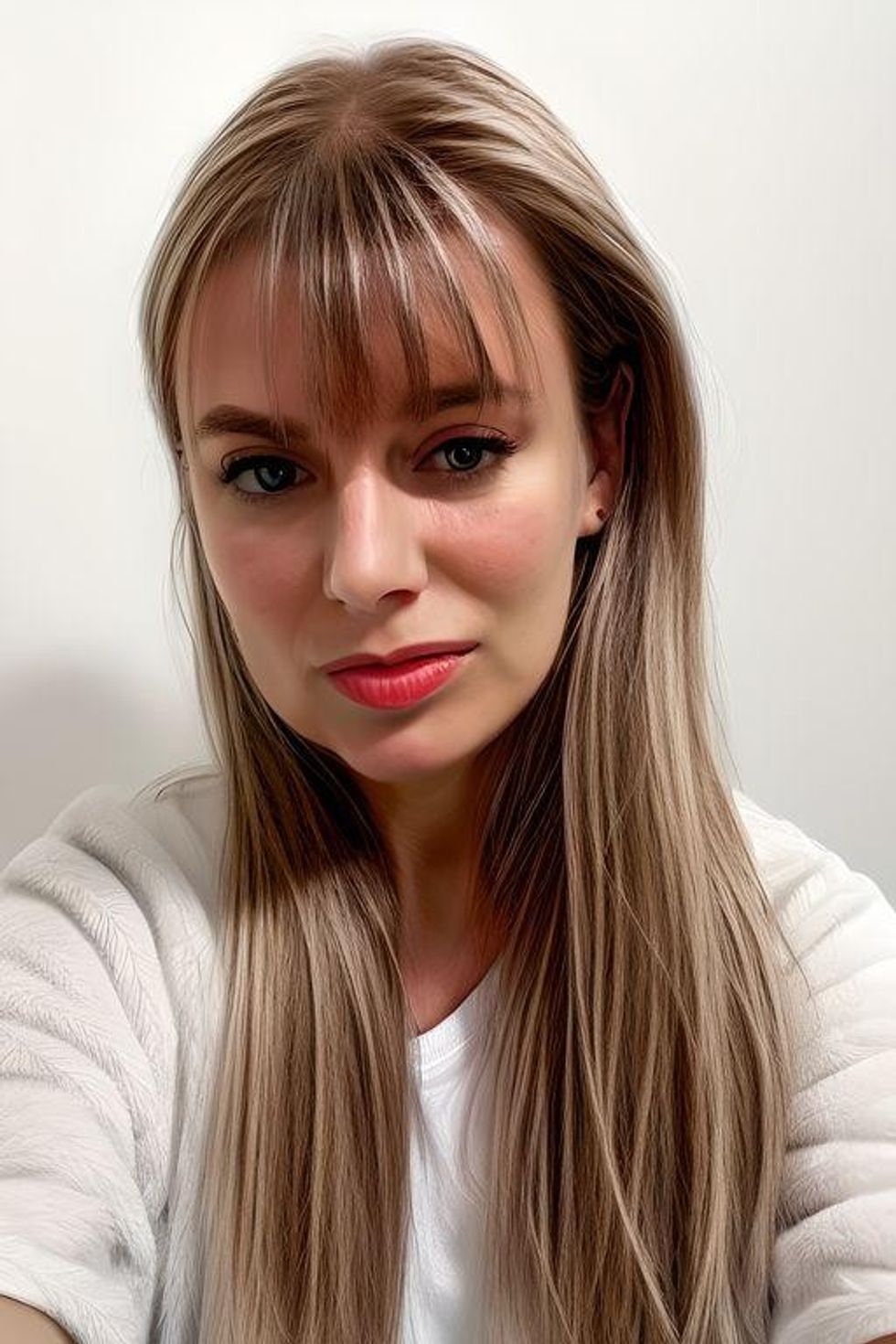
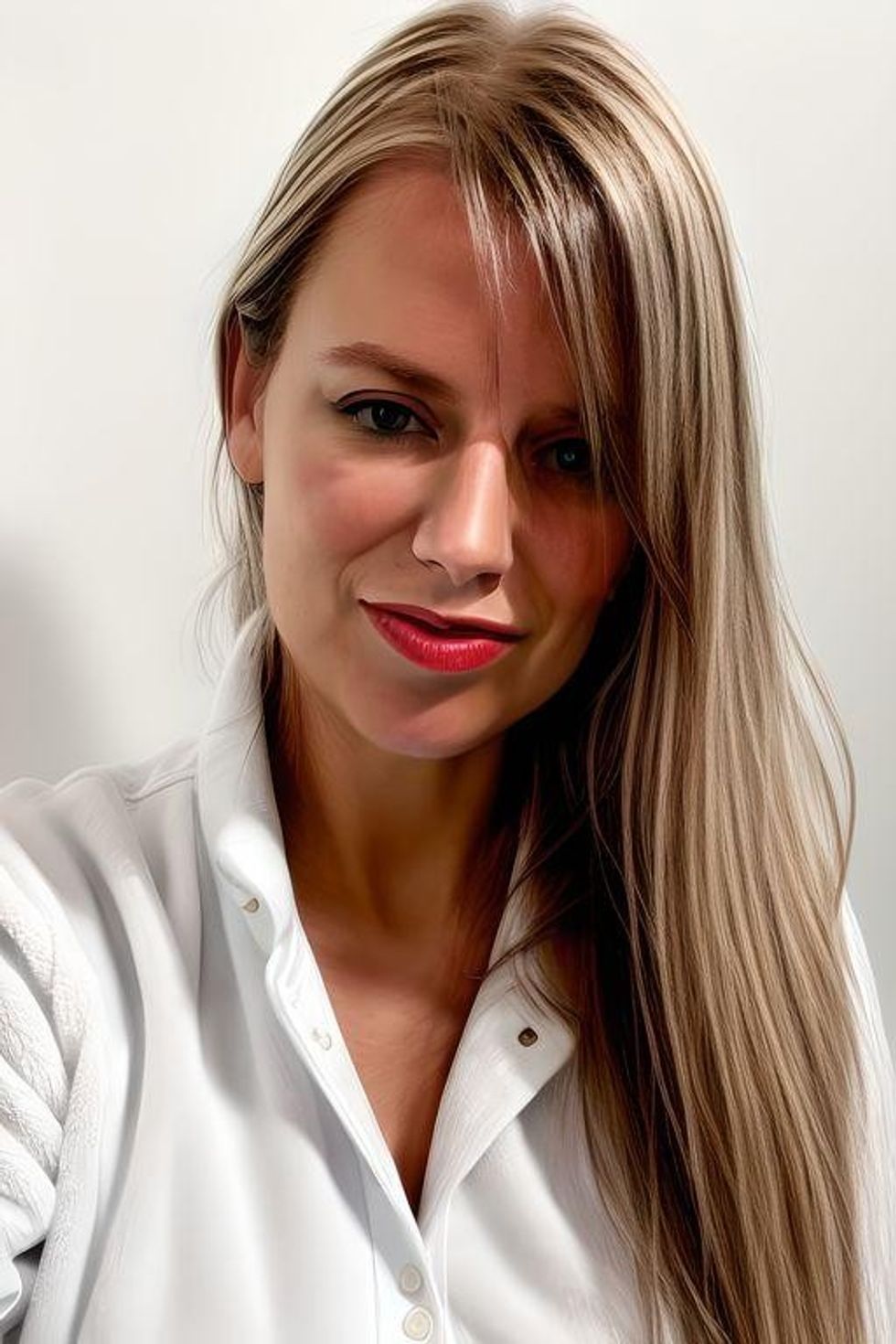
None of my input pictures had bangs, so there’s no real reason for this particular series. Something about it making the decision to continually put me in MySpace side bangs was feeling like a dig about my millennial age. Are faces in their early thirties just best represented on the internet by bad bang-ed Facebook profile selfies? Likewise, judging by the clothes, this AI clearly lied on its resume about knowing the definition of “professional.” Baggy t-shirts and branded polos, for anyone not handing out towels on a yacht, are clearly not within the popular understanding of “professional.” Likewise, while I have to give the AI credit for inventing a garment I’m certain no human has ever before conceived of–the scrunchy terrycloth shrugs above-they are, again, not within any existing definition of “professional attire.”
Look, I’m not stupid; I’m aware that this is objectively bad software. The renderings are shitty, and this program has clearly not been properly trained when it comes to the clothing choices. Does that make the initial experience of seeing your biggest insecurities cartoonishly exaggerated any less painful? No. Does it help to watch the computer struggle to make an attractive human face out of your features? Also no. For example, it kept pushing very lovely ladies who couldn’t look less like me. Like these gals:


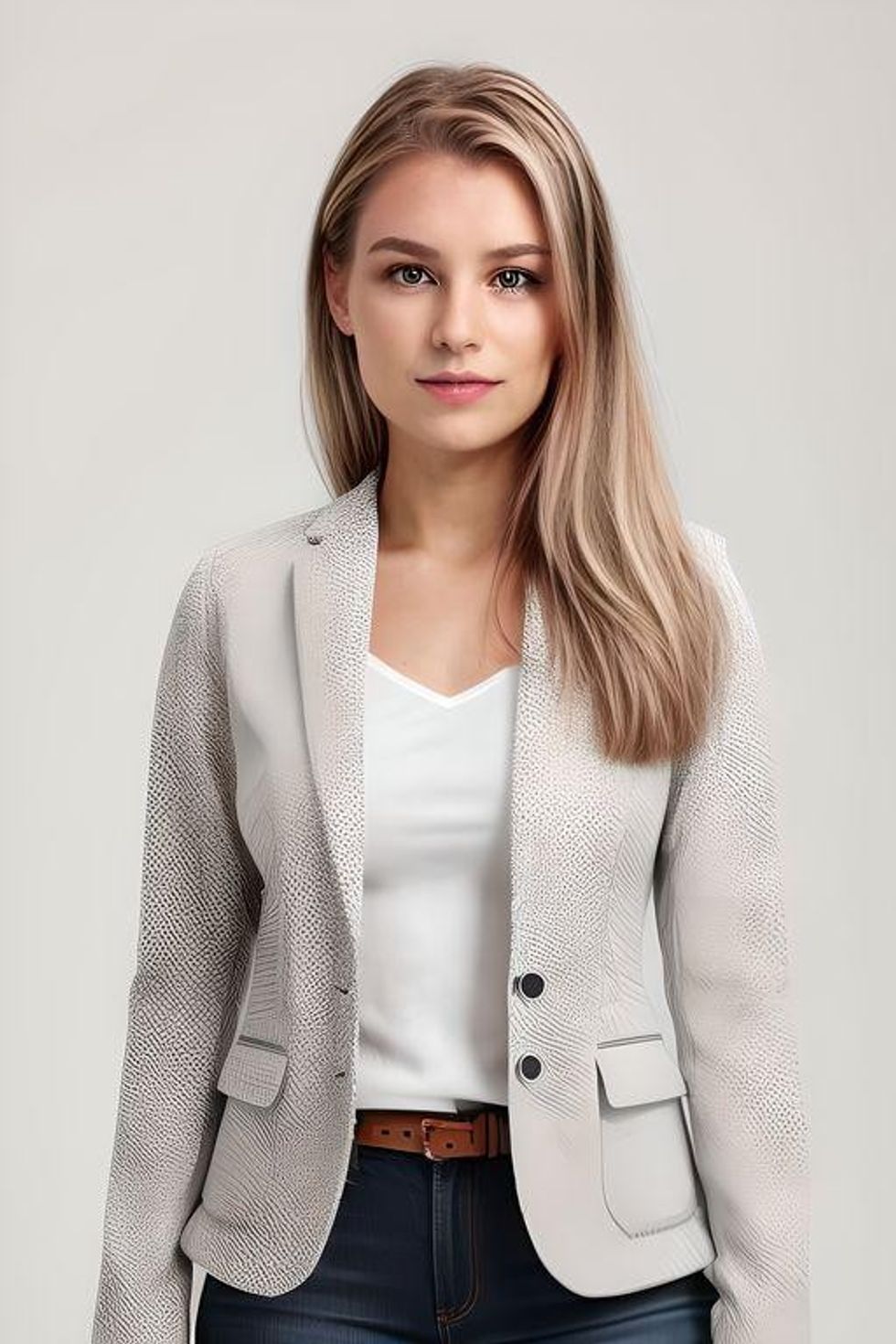
I can appreciate that it’s probably just good business to try to identify what the people want and give it to them. Thus, I can understand how it maybe thought I just wanted pictures of the platonic ideal of a blonde woman in a suit. When the masses are all about posting their “‘70s self” even when that “self” clearly looks nothing like them, who knows, some people might want this result.
As depressing as it was to see that the only way a computer could make a normal-looking face was apparently to make it look less like my own, I wasn’t prepared for how I would feel when I got to the last picture:


Clearly this doesn’t look exactly like me–included is the most recent pic with a similar pose I could find–and the choice of terrycloth blazer with an oversized silk tie is utterly batshit, but it came the closest to looking like me of any of them. It’s hard to describe how emotional I felt seeing this picture. I’ve read about people experiencing “gender euphoria” when they try a filter that makes them look more like the gender they identify with, and that’s the only analogy I can find to describe it. I was so, so relieved to see my own face, to finally recognize myself. I was overjoyed to see my smile lines, my strong nose, my hooded eyes. Would it be cooler if I had recognized myself in the most stereotypically attractive pictures? Theoretically, yes, sure. But I didn’t think of that at the time–I was just so, so grateful to have climbed out of the uncanny valley, to finally get that jolt of recognition from seeing and knowing myself.
In conclusion, I don’t recommend AI headshots on a practical level; clearly, there isn’t a single picture here that isn’t unusable garbage. Hiring a professional or even just trying to get a friend to take a good phone pic would have been a much better way to go. But oddly, this experience was the best therapy I’ve ever gotten for my BDD, and I wholeheartedly recommend even god-awful Fotor as a means to that end. This process was basically an accidental thought experiment that showed me how much I took my own face for granted. This is the face that the love of my life proposed to and kissed at our wedding; the face that my friends pick out of a crowd and come hug hello; that my friends see light up with joy at seeing theirs. This face and this body have been my vessel for quite some time, my little spaceship on the galactic adventure of life. I can at least have as much fondness for it as your average movie cowboy has for his horse.
This experience forced me into body positivity, not even in an “every body is beautiful” way, but in a “who cares if it is?” way. I wouldn’t alter a single thing about the appearance of any of my loved ones; I simply don’t think about their appearance, let alone as something indicative of their worth. They just look like the person I love; I would never change that. And if I can do that for them, then maybe, just maybe, I can do it for myself.




